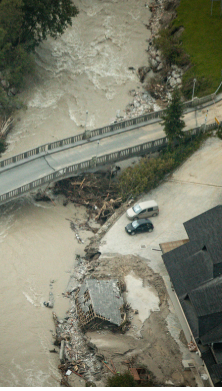- Analysis of over 470,000 global insurance claims from 2013 to 2018. Largest financial losses come from fires/explosions and aviation incidents
- Majority of corporate insurance claims originate from technical or human factors, accounting for 87% of all claims by value
- Property claims are becoming more expensive, with a rising share of business interruption losses
- Defective product and faulty workmanship incidents are the top cause of liability losses for businesses
Cyber risks and the impact of new technologies will have an increasing influence on the corporate loss landscape in years to come. However, it is fire and explosion incidents that cause the largest claims for insurers and the businesses they cover, according to new research from Allianz Global Corporate & Specialty (AGCS). The vast majority of corporate insurance claims originate from technical or human factors despite natural catastrophes such as hurricanes, having caused devastating losses over the past two years.
In its latest Global Claims Review, AGCS reveals the top causes of claims in the corporate insurance segment based on an analysis of 470,000 claims from over 200 countries over the past five years (July 2013 to July 2018) with an approximate value of €58bn (US$66.5bn).
The largest financial losses come from fires/explosions, aviation incidents, faulty workmanship/maintenance incidents and storms, which collectively account for over 50% of all claims by total value. Over 75% of financial losses globally arise from 10 major causes of loss .


More expensive fires and aviation repairs
Over the past five years fire and explosion incidents have caused in excess of €14bn worth of losses and are responsible for more than half (11) of the 20 largest non-natural catastrophe events analyzed. The average claim is almost €1.5mn.
“In general, property insurance claims are higher with inflation and greater concentration in value as a result of globalization and more integrated supply chains,” explains Raymond Hogendoorn, Property and Engineering Claims Specialist at AGCS. “As manufacturers have become more efficient, the values per square meter have risen exponentially. Fire and flood claims are much more expensive per square meter than a decade ago.”
Costs associated with the impact of business interruption (BI) can significantly add to the final loss total from fire and explosion incidents, as well as many of the other major causes of loss identified in the report. Almost all large property insurance claims now include a major BI element: The average BI property insurance claim now totals over €3mn (€3.1mn). This is around 39% higher than the corresponding average direct property loss (€2.2mn).
Despite recent record-breaking natural catastrophe loss activity in the US and around the world, storm is the only natural catastrophe event to appear in the top 10 causes of loss. Analysis shows corporate insurance claims typically originate from technical or human factors – or non-natural catastrophe events – accounting for 87% of all claims by value.
The global aviation industry recently experienced its safest year ever but claims activity shows no sign of abating. Aviation collision/crash incidents – on the ground and in the air – are the second major cause of losses. Increasing repair costs from composite materials and more sophisticated higher value engines on aircrafts are also a factor.
Liability trends and InsurTech improvements
Defective products and faulty workmanship incidents, which account for 14% of all claims by value, are the top cause of liability losses for businesses. Product liability claims are becoming larger and product recalls are increasing in size. Supply chains in industries like automotive manufacturing are now more complex. As companies restrict their number of worldwide suppliers, it increases product liability risks for these few suppliers exponentially.
It is estimated that around a third of large corporate liability claims involve litigation with third parties, compared with property insurance where less than 1% of claims do on average. The US in particular, has seen a trend towards higher settlements and awards in personal injury cases with some facing high punitive damages as recent verdicts around the chemical glyphosate and talc products demonstrate.
“We are not seeing a rise in the frequency of liability claims but the value of claims has been rising with higher awards and rising legal costs,” says Peter Oenning, Liability Claims Specialist at AGCS. “We are also seeing much larger claims in Latin America and Asia than in the past. Once, nine out of 10 of our largest claims globally would have come from the US, now it is more like seven out of 10.”
Analysis also shows that insurers have paid on average €32mn a day over the past five years to cover losses – AGCS alone paid €4.8bn to its insureds in 2017. Insurers are increasingly adopting innovative technologies to improve the claims handling process. Machine learning and robotics can speed up the claims process for low-value, high-frequency claims. To quickly assess wind or flood damage following natural catastrophes, AGCS utilizes satellite imagery and drones, providing faster loss estimates that enable better allocation of resources and earlier claims payments.
The report provides loss break-down statistics for 13 countries and analyzes claims patterns across various industries such as aviation, shipping and energy as well as insurance lines of businesses such as property, engineering, liability and financial lines.
Press Contacts
About Allianz Global Corporate & Specialty
Allianz Global Corporate & Specialty (AGCS) is the Allianz Group's dedicated carrier for corporate and specialty insurance business. AGCS provides insurance and risk consultancy across the whole spectrum of specialty, alternative risk transfer and corporate business: Marine, Aviation (incl. Space), Energy, Engineering, Entertainment, Financial Lines (incl. D&O), Liability, Mid-Corporate and Property insurance (incl. International Insurance Programs).
Worldwide, AGCS operates with its own teams in 34 countries and through the Allianz Group network and partners in over 210 countries and territories, employing almost 4,700 people of 70 nationalities. AGCS provides insurance solutions to more than three quarters of the Fortune Global 500 companies, writing a total of €7.4 billion gross premium worldwide in 2017.
AGCS SE is rated AA by Standard & Poor’s and A+ by A.M. Best.




















